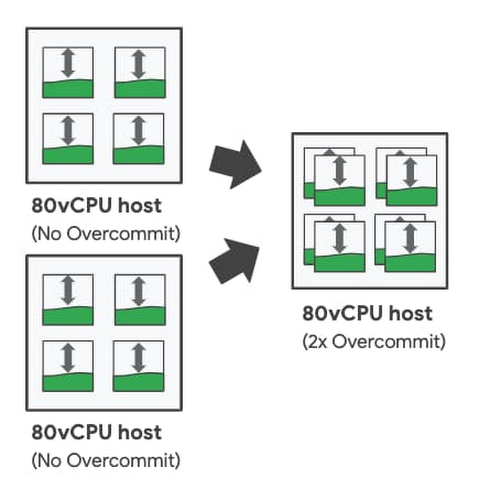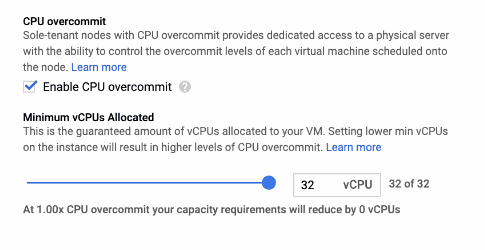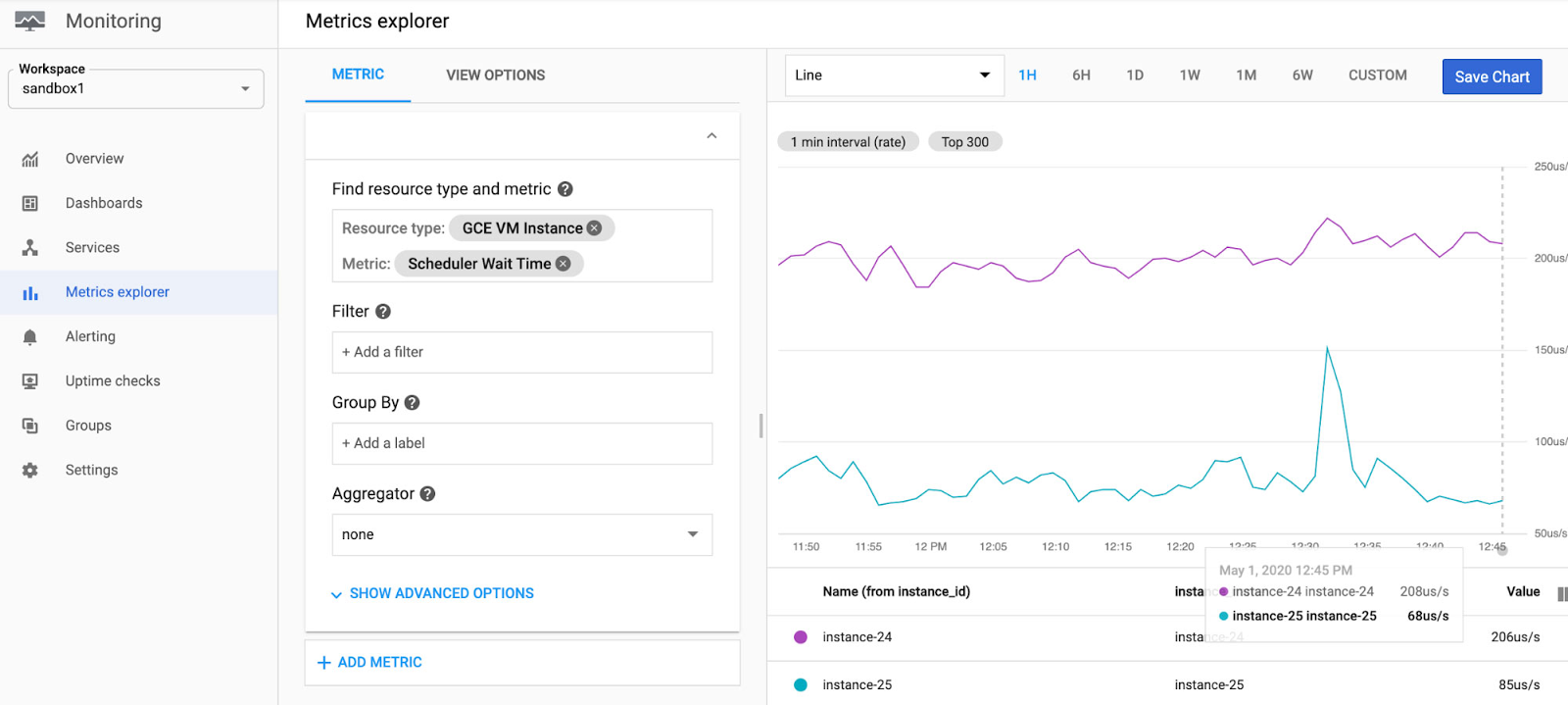Get more from every core: Announcing CPU overcommit for Compute Engine
David Cheng
Senior Product Manager
Adam Levin
Product Marketing Manager
As part of our commitment to provide the most enterprise-friendly, intelligent, and cost effective options for running workloads in the cloud, we are excited to announce CPU overcommit for sole-tenant nodes is now generally available.
With CPU overcommit for sole-tenant nodes, you can over-provision your dedicated host virtual CPU resources by up to 2X. CPU overcommit automatically reallocates virtual CPUs across your sole-tenant nodes from idle VM instances to VM instances that need additional resources. This allows you to intelligently pool CPU cycles to reduce compute requirements when running enterprise workloads on dedicated hardware.


CPU overcommit for sole-tenant nodes addresses common enterprise challenges such as:
Running cost-efficient virtual desktops in the cloud - CPU overcommit for sole-tenant nodes enables building cost-efficient virtual desktop solutions by intelligently sharing resources across VMs based on usage when dedicated hardware requirements from licensing requirements exist.
Improving host utilization and helping to reduce infrastructure costs - CPU overcommit allows you to further increase the available host CPUs on each sole-tenant node. Coupled with custom machine types, CPU overcommit helps optimize memory usage and supports higher utilization for workloads with lower memory footprints.
Reducing license costs - For licenses based on host physical-cores — such as bring-your-own-license for Windows Server or Microsoft SQL Server — CPU overcommit for sole-tenant nodes allows you to place more VMs on each licensed server. This allows you to persist on-prem licensing constructs and can help greatly reduce your licensing cost burden when running on Google Cloud.
Flexible control
CPU overcommit for sole-tenant nodes is controlled at the VM instance-level by setting the minimum number of guaranteed virtual CPUs per VM along with the maximum burstable virtual CPUs per VM. This gives you flexible per-VM control to mix-and-match VM sizes and overcommit levels on a single sole-tenant node, so you can meet your specific workload needs. For example, when running a traditional virtual desktop workload, you can choose to uniformly overcommit all instances on a sole-tenant node; while for custom application deployments, you can choose tailored CPU overcommit levels (or no overcommit) for workloads with greater performance sensitivity. With up to a 2X overcommit setting per instance, you can oversubscribe each sole-tenant node by up to twice the number of base virtual CPUs. This means that for an n2-node-80-640 with 80 virtual CPUs, CPU overcommit allows you to treat the node as if there were up to 160 virtual CPUs.


Intelligent monitoring
CPU overcommit for sole-tenant nodes offers detailed metrics to monitor your VM instances to help you better tune your instance overcommit settings. Using the built-in Scheduler Wait Time metric available in Cloud Monitoring, you can view instance-level wait-time statistics to see the impact of oversubscription on your workload. The scheduler wait-time metric allows you to measure the amount of time your instance is waiting for CPU cycles so that you can appropriately adjust overcommit levels based on workload needs. To help you take action quickly, you can set up Cloud Monitoring to trigger alerts for instance wait-time thresholds.


Pricing and availability
Sole-tenant nodes configured for CPU overcommit incur a fixed 25% premium charge. CPU overcommit configured sole-tenant nodes are available on N1 and N2 nodes in regions and zones with sole-tenant node availability.
Click here to learn more about Compute Engine and sole-tenant nodes.
